A lot of my clients say that chest day is the best day because they get to work on a body part they are most proud of.
One of the ideal pieces of equipment is a cable crossover machine, but that’s not always an option for a home gym.
As a certified personal trainer, I've come up with some cable crossover alternative exercises that use free weights and your body weight, for which you won't need a cable machine.
We use these arms and chest exercises with many of our clients who have all exceeded their goals for the perfect pecs.
But before we get to the cable crossover alternatives, let’s address some common questions.
Quick Summary
- To achieve a ripped chest without a cable crossover machine, incorporate exercises like flat dumbbell flies, incline dumbbell flies, resistance band crossovers, chest dips, TRX chest flies, and resistance band pull-apart.
- These alternatives offer versatility and can be performed with basic equipment like free weights and resistance bands, making them accessible for home workouts.
- According to a meta-analysis from the National Center for Biotechnology Information, elastic resistance training shows no significant difference in upper limb strength gains (standardized mean difference = −0.011; 95% CI = −0.40, 0.19; p = 0.48) and lower limb strength gains (standardized mean difference = 0.09; 95% CI = −0.18, 0.35; p = 0.52) compared to conventional resistance training, indicating similar effectiveness.
- As a certified personal trainer, I advocate these alternatives for their effectiveness in building pecs and engaging multiple muscle groups, thus enhancing overall upper body strength.
Why Are Crossover Exercises So Effective?

Crossover exercises are effective because they engage multiple muscle groups simultaneously, leading to more comprehensive upper-body muscle growth and core strengthening in the same workout duration.
According to one of the studies from the National Center for Biotechnology Information website, crossover exercises are effective because they trigger multiple muscle groups at the same time [1].
As a result, you can exercise more areas at the same time, achieving more upper body muscle growth with the same time spent in the gym. And then there’s the added bonus for your core.
While I generally look forward to a designated set of ab workouts, I find engaging the core muscles on a more regular basis helps to better keep the six-pack in shape.
As a bodybuilder, I’m a big fan of the cable crossover machine, even though many of my friends say that it’s breaking from the traditional free-weight approach.
Our Top Cable Crossover Alternatives
We designed these cable crossover alternative exercises to allow you to work out your pectoral muscles at home or at the gym. You will need some resistance bands, a few dumbbells, and a flat bench.
But all that dwarfs the expense of investing in a cable crossover machine.
1. A Cable Crossover Alternative: Flat Dumbbell Flyes
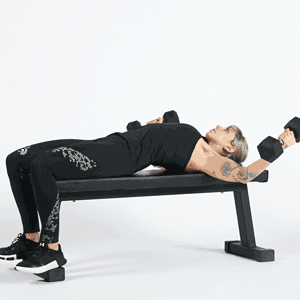
The first of our cable crossover alternatives is a standard dumbbell fly on a flat exercise bench, which is also one of my personal favorites.
Many bodybuilders favor the bench dumbbell fly exercise as it isolates the pecs because your body is supported on that flat bench. Lie down on the flat bench and hold a dumbbell in each hand, your arms resting just above your chest. Stretch your arms upwards but maintain the position of a slight bend in your elbows.
You will lower your arms slowly to each side while inhaling for the count of 3. Allow your arms to drop until they are parallel to the floor, and then exhale while pulling the dumbbells back up again.
It’s important that you pick a weight that allows you to do 8 to 10 reps of the exercise with the full range of motion. If you’re cutting the movement short, then you won’t get the same benefits from this upper body exercise.
Other types of exercises:
2. Incline Dumbbell Fly Instead Of A Cable Crossover Exercise
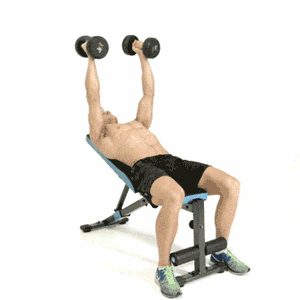
Here’s another great alternative to the cable crossover, which I often implement to isolate my pecs.
It might seem like a minimal change to the setup from the flat bench flyes, but you’ll feel the strain on your pecs and shoulders is quite different. Let me show you. Adjust your bench to set the backrest to about 30 to 40-degree angle.
Get into a comfortable position and hold your dumbbells at chest level to make sure you’re fully balanced. Stretch out your arms vertically up with your hands straight up from your shoulders.
Slowly lower your arms to each side and once they are parallel to the ground, pull them back up to the starting point. Compared to a flat bench, the incline dumbbell setup engages your upper pecs more than the lower pectoral muscles.
Essentially, it allows you to further isolate specific muscles [2].
“An isolation exercise, as the name would suggest, is an exercise that involves just one joint and recruits a limited number of muscles, usually with the particular focus on one body part.”
- MensHealth.com.
3. Resistance Band Crossover - Another Great Alternative to The Cable Crossover
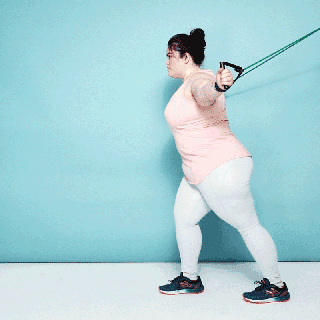
One of the studies from the National Center for Biotechnology Information website suggests that resistance training with elastic devices provides similar strength gains when compared to resistance training performed from conventional devices [3].
You’ll need a set of exercise resistance bands, ideally ones that attach to a handle, rather than looped bands. Try to find a good anchoring point like a piece of gym equipment or a solid hook on a door or wall.
Loop the resistance band around your anchor point, grab hold of a handle in each hand and stand with your back to the anchoring point. Take a step forward to build up some tension on the bands, and then pull your hands forward in front of your chest at 90 degrees.
Now it’s time to slowly allow your arms to flare out to the side with your elbows slightly bent. You’ll feel this movement push your shoulder blades together, and once your hands are in line with your chest, it’s time to push the arms back forward to your starting position.
Related: Best Resistance Band Chest Exercises
4. Chest Dips
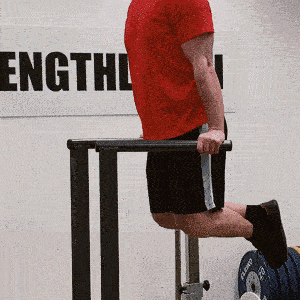
Now, for this exercise you’ll find various sizes of dip machine that come with quite a price tag. But, some simple parallel bars should be more than enough to help you shape your arms, shoulders and pecs.
You have to be careful that you approach this exercise correctly, as it is very different from a standard triceps dip. Set yourself up on the dip bars with your elbows slightly bent and already pointing a little outwards.
As you lower your body, it’s important to allow your elbows to flare out to open up the angle between your arms and chest. Once you get to a 90-degree angle in your elbows, it’s time to return to the starting position and repeat until your elbows get to the 90 degrees again.
As you grow stronger, you’ll be able to increase your movement range by dipping lower, but keep in mind that the lower you go, the more strain you’ll place on your shoulders and pecs.
Learn more: Chest Dip Alternatives
5. One-Arm Dumbbell Bench Press
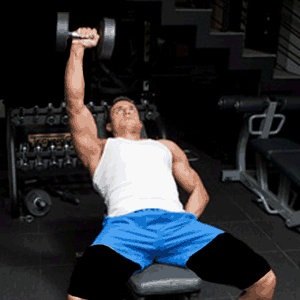
Here’s another great alternative to a cable machine, where I often work on isolating one arm, shoulder, and chest area. For this bench press exercise, you’ll need a flat bench and some dumbbells in your home gym to do this cable crossover exercise.
Your starting position is flat on the bench with one dumbbell in your right hand just above your chest, elbow at 90 degrees. Push it straight up with your palm facing inward. Slowly lower the dumbbell to your chest and once you reach the lowest position, push it straight back up again.
The important thing to keep in mind is that one-arm dumbbell bench press shouldn’t be a move like the bench dumbbell fly. Based on my experience, you’ll end up completely off-balance and probably slide off the bench to make a holy show of yourself.
6. Resistance Band Rows To Simulate A Cable Crossover
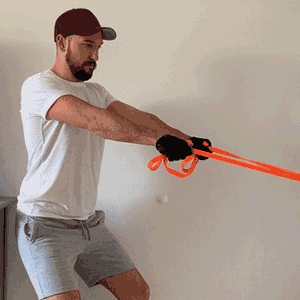
The cable row is an ideal way to train everything from your chest to shoulders and upper back muscles, as a whole pectoral muscles and chest workout. And the great thing is that you achieve the same effect with a set of exercise resistance bands as you would with a cable machine.
Find a seated position on a flat bench on the floor level and attach your resistance bands to a solid anchor point in front of you. At your starting position, you should already feel a bit of tension on the bands so that the exercise counts from the very start.
Pull the handles towards you in a slow and controlled way until they touch your chest. At this stage, you should feel your shoulder blades squeezing together. Then, slowly allow your hands to move forward to the starting position again.
7. TRX Chest Fly
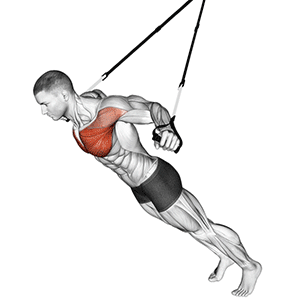
This is another one of the cable crossover alternatives that can be highly effective and requires only a TRX suspension trainer. You’ve probably seen people using these thick bands at the gym that allow for raising parts of your body off the ground to create more intense bodyweight exercises.
Anchor the resistance bands to the ceiling or a suitable place high above you. Hold onto the handles in each hand and stretch your arms out in front of you, lifting them at 90 degrees, while leaning forward with your full body.
Now open up your arms to each side in a wing-like movement until you create a straight line from one hand, through your shoulders to the other hand. From there, pull your hands back together into the starting position.
“TRX isn’t like machine-based training in the gym. The concept is quite basic: you use the two straps with your feet or hands to partially suspend your body, then use your own body weight as resistance."
- Amy Packham, Writer at HuffingtonPost.com.
The trick here is that the lower you adjust the handles, the tougher you make the exercise and the more it works your arms, shoulders and pecs.
8. Resistance Band Pull-Apart

You’ll want to get a looped resistance band for this, as I find them easier to wrap around your wrists and concentrate your workout on your chest muscles. Stand up straight and loop the resistance band around your hands or wrists so that they are about shoulder-width apart with just a little bit of tension.
Now pull each end of the resistance band in opposite directions with your arms, as far as your hands will reach. If you cannot fully extend your arms, then you’ll need to use a thinner band.
You should very quickly feel a gradually increasing strain on your chest and shoulders, which is very similar to what you’d experience with cable crossovers.
9. Banded Wide Push-Ups
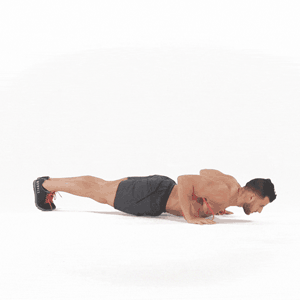
Using the same looped band from the previous exercise, you can spice up your push-up exercises. It’s a great alternative for a home gym, especially once you build up enough strength to do 20 or 30 push-ups.
You’ll gain more for your pectoral muscles from doing fewer tough reps than constantly increasing the total number of reps. Lay down flat on the ground with one hand on each side of your shoulders. Loop the band around your hands and over your back, and then push yourself up to your regular starting position.
Go through your push-ups with a full range of motion and experiment with different bands around your arms to reduce your reps to below 12.
10. Svend Press

The final one of our exercises is called the Svend press, and I have no idea who or why it was called that. What you need are two weight plates that you hold by pressing them together with your hands from each side.
Hold the plates just in front of your chest, and then slowly stretch your arms out and slightly up. Then pull them back to your chest and repeat the movement.
Keep in mind that you need to keep your elbows bent to avoid unnecessary strain. You’ll feel this work your whole upper body, but especially your shoulder and chest muscles.
Are Crossovers Without A Machine Still Effective?

Crossovers without a machine are still effective if you correctly use resistance bands and free weights. In my experience, the important thing is that you get the movements right to match what you would do during regular cable crossovers.
Make it a slow and high-quality movement that burns like hell after 8 to 10 reps, and there’s no reason you won’t achieve the same results without a cable crossover machine.
Until you get to a serious professional level of muscle bulk, keep your chest workout simple.
FAQs
What Is the Historical Evolution of Chest Exercises Like Cable Crossovers?
The historical evolution of chest exercises, such as cable crossovers, has progressed from basic calisthenics to sophisticated gym equipment-based workouts, reflecting decades of fitness and bodybuilding innovation.
How Do Different Cable Crossover Alternatives Engage Chest Muscles Anatomically?
Different cable crossover alternatives anatomically engage chest muscles by targeting specific areas like the pectoralis, major or minor, with the exercise angle and movement determining muscle fiber activation for targeted development.
What Are the Physiological Benefits of Cable Crossover Alternatives Beyond Muscle Building?
Beyond muscle building, cable crossover alternatives offer physiological benefits such as improved posture, enhanced respiratory function, and potential cardiovascular health improvements, contributing to overall physical well-being.
How Can Cable Crossover Alternatives Aid in Injury Prevention and Rehabilitation?
Cable crossover alternatives aid in injury prevention and rehabilitation by providing adjustable resistance and controlled movements, which are beneficial for gently strengthening chest and shoulder muscles while minimizing strain on injured areas.
How Can Cable Crossover Alternatives Be Integrated into Various Workout Regimes?
Cable crossover alternatives can be integrated into various workout regimes, including circuit training, HIIT, and disciplines like yoga and Pilates, enhancing workout versatility and effectiveness for diverse fitness goals.
References:
- https://www.ncbi.nlm.nih.gov/pmc/articles/PMC4592763/
- https://www.menshealth.com/uk/fitness/a32919246/praise-isolation-exercises/
- https://www.ncbi.nlm.nih.gov/pmc/articles/PMC6383082/
About The Author
You May Also Like
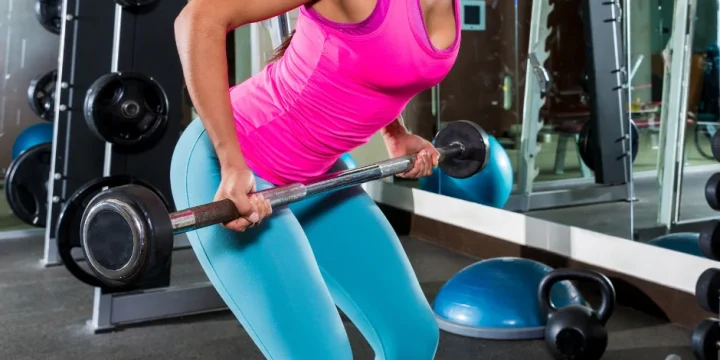
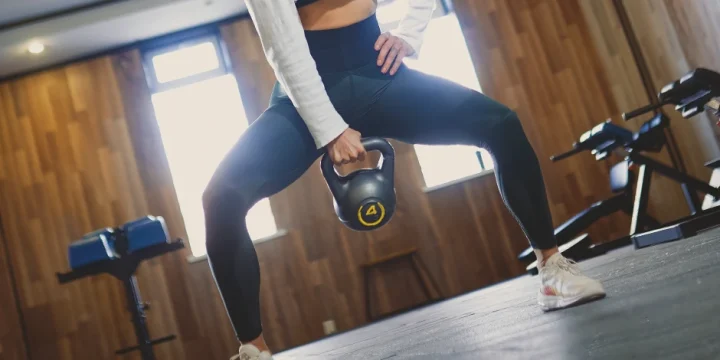
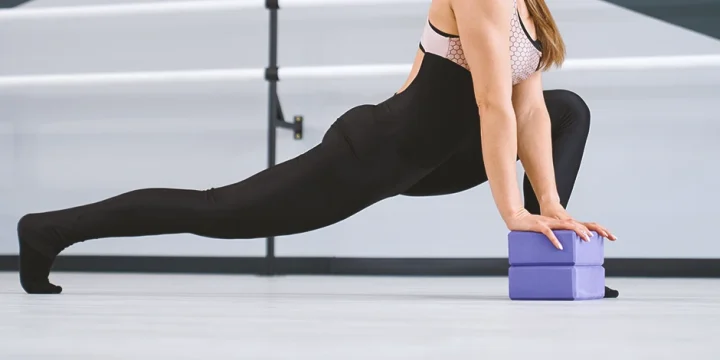
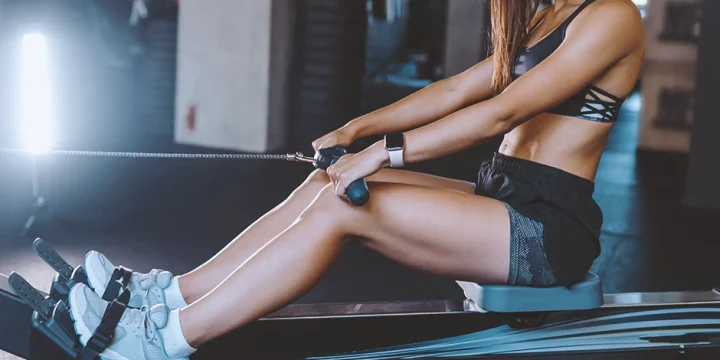

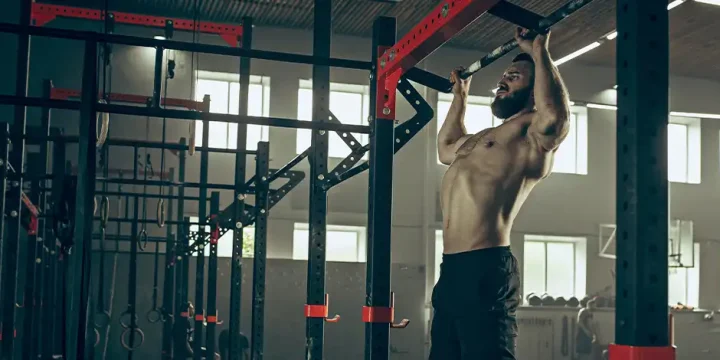

Thanks for this! I’ve been looking for standing cable crossovers since I don’t have easy access to a gym.